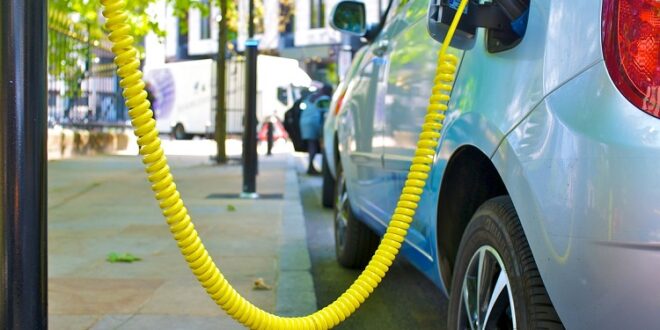Over time, electric cars have captured significant attention due to the remarkable progress achieved in the automotive sector. But several EV charging misconceptions have been going around, and it’s crucial to tell them apart from the truth. Some common Electric Vehicle charging myths include how long it takes to charge and how it works. Thus, awareness of these myths is essential to understand electric vehicles better.
Myth 1: Charging electric vehicles takes multiple hours.
Despite the misconception that charging electric vehicles with the Level 1 connector takes days due to its slow charging speed, it’s important to note that most people only need to recharge part of the battery in one day. Usually, driving to work and running errands won’t cause a significant decrease in an EV’s battery range. With the standard 120V connector, you’ll only need to recharge around 20% of the battery’s capacity after each use of your EV.
Replenishing the battery from empty to full capacity requires a significant amount of time and is not feasible. Nevertheless, it is achievable to completely recharge your car’s battery overnight using a Level 2 charger at home, even when extremely draining. Generally, charging 20% of the battery is much faster than charging it completely.
Myth 2: All Fast Charges are identical.
People often believe that all Level 2 chargers and Level 3 chargers are identical. However, the current output of an EV charger decides its speed, and it varies depending on the model and make. Although all Level 2 chargers fall under the same category, some are quicker than others. EV chargers with high current outputs will be faster in charging your EV.
Myth 3: Charging electric vehicles is unsafe.
Charging an EV is safe as there is no risk of explosion or leakage, unlike traditional cars with combustion engines. EV models have additional safety features like temperature protection and fail-safes that prevent overcharging or fires if misused. Following the manufacturer’s guidelines, EV owners do not need to worry about potential dangers while charging their vehicles.
Myth 4: Superchargers are the only places to charge Tesla cars.
There may be some confusion. You can charge your Tesla at home using a Level 2 charging station or a Level 1 connector. However, if you were referring to charging during a road trip, you can buy a CCS adapter, which lets you charge at other charging stations commonly available. It is beneficial because it allows you to charge at places other than the Supercharger network when it is more convenient. Furthermore, specific charging networks provide “Pay-As-You-Go” options, implying that you incur charges for the precise usage you require.
Myth 5: Charging an electric vehicle at a cold temperature is impossible.
Charging an extremely cold battery is not advisable as it can harm the battery. Thankfully, most electric vehicles have protective measures prohibiting charging until the battery has attained a safe temperature. If the battery is too cold, regenerative braking may also be limited. Charging your electric vehicle in cold temperatures may be slower, but it is still possible. Many EVs have features like manual heat triggering or automatic battery heating when navigating to a charging point to help address this issue.
Seek Always The Truth
These are the common EV charging myths that have been circulating. It is important to note that accurate information can quickly dispel these misconceptions. Properly researching and acquiring knowledge about electric vehicle charging Tampa systems’ functioning can enhance your understanding of electric vehicles. It is advisable to purchase electric vehicles from reputable suppliers and actively seek information by asking relevant questions. These steps will undoubtedly lead to satisfaction and contentment in the long run.
 HammBurg Be informed with latest news, reviews, entertainment, lifestyle tips, and much more.
HammBurg Be informed with latest news, reviews, entertainment, lifestyle tips, and much more.




